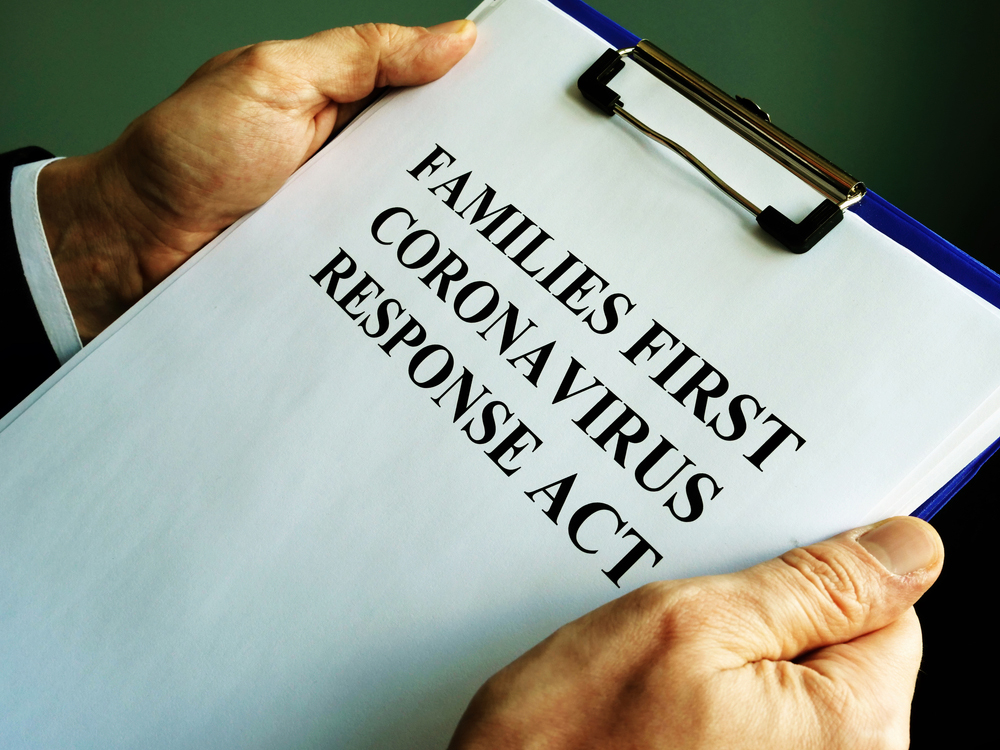The U.S. Department of Labor (DOL) has responded to a federal judge’s ruling against regulations related to a COVID-19 relief act with revisions that in some ways reaffirm the DOL’s original position.

In issuing the revised regulations implementing paid leave requirements under the Families First Coronavirus Response Act (FFCRA), the DOL said it was clarifying workers’ rights and employers’ responsibilities. The FFCRA covers private employers with fewer than 500 employees and provides limited paid sick and family and medical leave for coronavirus-related absences.
The revisions to the DOL’s original regulations are necessary because of an August 3 ruling from the U.S. District Court for the Southern District of New York in which the judge ruled the DOL’s regulations were too restrictive in four areas:
- How they applied to employees still employed but not working because the employer had no work for them to do;
- How they applied to employees of healthcare organizations;
- The regulations’ limits on the use of intermittent leave; and
- The kind of documentation required from employees.
Eligible employees. Philip Bruce, an attorney with McAfee & Taft in Oklahoma City, Oklahoma, says the DOL’s revisions reaffirm its position that employees may take FFCRA paid leave only if work would otherwise be available to them. The original rule said employees aren’t entitled to paid sick or family and medical leave if their employer doesn’t have work for them. The judge said the rule’s interpretation of the language in the statute was “patently deficient.”
Bruce said the revised regulations provide more legal justification and reasoning for the DOL’s position. “Primarily, the DOL pointed to its longstanding interpretation of the term ‘leave’ and that it is most simply and clearly understood as an authorized absence when work is available,” he says.
Bruce says the revisions clarify that an employer cannot avoid providing FFCRA by changing an employee’s schedule after a request. Doing so could be considered retaliation and would violate the FFCRA.
Intermittent leave. The judge’s ruling partially vacated the DOL’s rule limiting intermittent leave under the FFCRA. The judge’s ruling said employers could limit intermittent leave when an employee posed a threat of spreading COVID-19, but employees should be allowed to take FFCRA leave intermittently for reasons that don’t pose a health risk, such as to care for a child whose school or daycare is closed because of the pandemic.
Bruce says the DOL reaffirmed and bolstered its explanation that employer approval is required for an employee to take FFCRA leave intermittently. He says the DOL provided an analysis of its position by looking at its longstanding interpretations, the structure of the Family and Medical Leave Act (FMLA) and the FFCRA, and the reasoning behind intermittent leave.
Healthcare provider definition. The FFCRA excludes healthcare providers from the paid leave requirements, but the judge said the definition of healthcare provider in the original regulations was too broad, since it included anyone working for a healthcare organization. The revised regulation uses a definition that is still broader than the definition used in other sections of the FMLA, Bruce says.
“The takeaway is that the definition is narrowed from the original definition but is still fairly broad,” Bruce says. The revised regulations include examples of workers (IT professionals, building maintenance, HR personnel, etc.) that aren’t covered in the definition of healthcare provider even when they work for a healthcare organization.
Leave documentation. The judge’s ruling said the DOL’s original rule requiring documentation of an employee’s need for leave went beyond the requirements in the statute. Bruce says notice for emergency paid sick leave under the FFCRA may not be required in advance, but after the first workday in which an employee takes paid sick leave, the DOL says the employer may require notice as soon as practical.
“However, the DOL says that notice for expanded family and medical leave may be required as soon as practical, and when that need is foreseeable, that can include prior to the need to take leave,” Bruce says.
Advice to Employers
Bruce says his advice to employers is threefold:
- Update your FFCRA policies as necessary, particularly any policies that don’t follow the revised guidance on the definition of healthcare provider and the timing of notice documentation and notice for FFCRA leave.
- Employers in the healthcare industry should carefully review the updated changes with counsel.
- Employers should continue to monitor case developments and actions by the DOL. “These revisions may again be subject to litigation and again change employers’ obligations,” Bruce says.
Tammy Binford writes and edits news alerts and newsletter articles on labor and employment law topics for BLR web and print publications.
